The current social and political situation of Bharat is as much the result of post-independence policies and the freedom struggle as the medieval period of Bharat. The history of Bharat is a tale of resistance and self-sacrifice in the face of threat, and also of domination over others. This glorious past, due to the historiography of Marxist historians and their reductionist attitude, has been neglected and not much researched, many a times discredited as the invention of Whatsapp University. This reductionist attitude and the vagueness in Bhartiya history has resulted in the problem of Rashtra Bodh in India. We will discuss this ‘vagueness’ later, first let us understand what Rashtra is.
Rashtra is often described as a Sanskrit counterpart to the word, Nation. A nation is a sense shared community among a people with shared history, language, culture, religion, territory etc. In the context of Bharat, Rashtra acquires a specific dimension. For Bharat Rashtra, religion or language, or even culture per se (as understood In Western context) does not set the parameter for Rashtra. Rather it is the recognition of the underlying principle of Dharma among the people. As described by Deen Dayal Upadhayay, Dharma is supreme in Bharat, not legislature, Judiciary, or even the people’s will, it is Dharma which guides and unifies Bharat.
Subsequently, Rashtra Bodh can be understood as the symbols through which you become aware of and relate with your Rashtra. These symbols can be historical figures, cultural symbols, art, etc. For Bharat Rashtra, it’s Rashtra Bodh stretches from the SaptaSindhu, the Vedas, and from Shri Ram to, in the modern times Chatrapati Shivaji Maharaj to Maharaja Ranjit Singh.
In contemporary times, there has been dissent about the conception of Bharat Rashtra and its Rashtra Bodh. Due to this, different perceptions about Bharat Rashtra and its Rashtra Bodh have emerged, which if not now, in the future will surely become a threat to the Unity of Bharat. This issue was the topic of much discussion in the writings of Golwalkar and Savarkar, but in contemporary politics it has taken a back stage.
In the minds of the citizens of India, there are three conceptions of Bharat, namely Hindu/Bhartiya Rashtra, Muslim Rashtra and the Secular/ Constitutional Rashtra. I will briefly discuss the first two conceptions after which the third conception would be discussed in detail.
The Hindu/Bharat Rashtra as proposed by Savarkar was not limited to a particular belief sytem, but constitutes the people and the land east of the Sindhu. Savarkar further added that those who considered this land as their ancestors as well as their sacred or historical land (they accept this land’s saints’ as their own, its history and heroes as its own etc.) are called Hindus and thus are citizens of this Hindu Rashtra. This conception is further evolved by Golwalkar and Pandit Deen Dayal Upadhayay constitutes of a Rashtra where not a sect or belief system, but Dharma reigns supreme. Dharma or the innate law of each person, on why they should how they should act has already been discussed above. One core belief of this Bharat Rashtra which Golwalkar much emphasized was that this Rashtra accepts (not tolerate) all, and shuns none, albeit you love this land and respect Dharma. The Rashtra bodh of Bharat has already been discussed above and are worshipped/ exalted as vibhutis.
The Muslim Rashtra in contemporary times is most radically seen in the conservatives elements of the society, the educated class has subsequently distanced itself from this thought. Though in recent years, there has been an upwards movement in the numbers of the adherents of this thought, due to the recent political developments which we will discuss ahead. The Muslim Rashtra sees itself as the conquerors and masters of Bharat, as they identify themselves with Muslim Invaders of medieval times. They believe that they have the first say in the resources of Bharat, they ought to be in the role of decision making. They exalt invaders from Qasim, Ghazni-Ghori to Ahmed Shah Abdali as their heroes, and they believe that they are descendants of these rulers. Another characterstic feature of this Muslim Rashtra is the phenomenon of ‘Othersation’. Much like the British did in colonial times, they identify two camps, us and them, which for reasons unknown, have to be against and struggle for the victory of one over another as is evident by the 1888 speech of Syed Ahmad Khan. They place this ‘Other’ in a hierarchy below them, and thus it is justified to exploit them. This scheme of ‘Otherisation’ is most clearly spelled out in the philosophy of Dar ul Harb and Dar ul Islam, where Islam can only be practised in the land where the state is also Islamic in nature.
The conflict between these two rashtra is commonplace, from the emergence of political consciousness in both communities during the colonial times. The most prominent of this conflict is the demand for Pakistan, and then subsequently fight for this, and ultimately the formation of Pakistan. Some may argue that after Independence, this Rashtra has vanished from Bharat but that’s just wishful thinking. After independence, multiple cases of Hindu-Muslim riots, demand for separate countries for Muslims in UP, Kerala etc. are proof of the continued existence of this Rashtra. The biggest example of the confrontation of the Bharat and Muslim Rashtra is that of the Ram Mandir struggle. The Muslims of India, or the Muslim Rashtra identified their Rashtra Bodh with the Babri Masjid, built by an invader after destroying an indigenous structure, which had been (and still is) a centre-piece of the Rashtra Bodh of Bharat. The debate over the legacy of Chatrapati Shivaji and Aurangzeb, with each side taking one of the figures as their hero, is also another example of the confrontation among these different Rashtras.
The third conception of Rashtra came forward during the Freedom struggle, as a method of reconciliation between the Hindu/Bharat Rashtra and the Muslim Rashtra, by the western educated, elites. This conceptualization is based on western principle and values. The followers of this Rashtra Bodh believe that independent India is a nation state not based on any common cultural link but rather its united due to the existence of the Indian Constitution. This glorification of the Constitution as the sole unifier of the people has resulted in its Abrahamisation, where rather the Constitution existing for the People, people exist for the sake of this Constitution. A side effect of this Abrahamisation is the fact that the will of the people (under the boundaries of Dharma), has lost its value as it can simply be proclaimed as against the spirit of the Constitution and is even labelled with the tags of ‘majoritarian’, ‘communal’etc. This trope has been in much use recently, where the recent trend of revivalism and a tendency of ‘going back to the roots’ is termed as a communal agenda of a fascist government and party, and against the Constitution. A very famous example of this is the Sabarimala Case where the sentiments of the actual believers and the rights of the deity was given no space, and Justice of the Constitution was implemented.
As the Secular/Constitutional Rashtra came as a middle path between the Bharat Rashtra and Muslim Rashtra, it tried to forge a unity, which proved artificial in the long run. One of the major projects undertaken by it was the rewriting of our history, to either downplay or even completely erase any mention of conflicts between the two, and to highlight that both these Rashtras existed in a utopia of a Ganga-Jamuni Tehzeeb. With this misconception, the secular Rashtra equated/ identified the Bhartiya Muslims with invaders, emphasising their religious character rather than nationality. The consequence of this is the continued survival of the two separate conceptions of Rashtra, as the Rashtra Bodh of the Bhartiya Muslims is with these foreigners, rather than their own countrymen. Another materialisation of the Secular Rashtra is the term minority. To believe that just because some people have a different belief system, are thus different or alien to Bharat Rashtra. That just because they have a different method of worship, they would need special privileges to freely practice there is a western and Semitic idea, where to coexist means the domination of one over another. Bharat Rashtra does not follow this ideal of domination, rather as identified by Golwalkar, we consider religion as a matter of the private sphere (Vyakti Dharma, which each is free to practice as they please, albeit without harming others.
The problem with this secular Rashtra, as mentioned above but to present it more concisely, is that it in its efforts to unite overlooks the contradiction between the Bharat Rashtra and Muslim Rashtra, and rather than directly confronting this contradiction follows a roundabout way, which further entrenches this contradiction. The contradiction is the difference of the Rashtra Bodh, where one identifies itself with the defender and the other with the invader, thus interlocking (till present times) the two Rashtra in a never ending conflict, and as being diametrically opposed to each other. Secondly, the Secular Rashtra, rooted in Abrahamic ideals, mistakenly believed that the majority would always dominate the minority, or force them to convert, thus it forced always presented the Bharat Rashtra as the problematic element. Thus it forced the Bharat Rashtra to concede, and not the other way around.
Now, the question comes to mind as to how to successfully reconcile these two Rashtra. This can be successfully done, or atleast we would take the first step on the right path, by making two distinctions. The first distinction being between indigenous and foreigner, as the historiography of this land often confuses between the two, it proclaims the Mughal as being Indian, who themselves believed they were the descendants of Mongols and the Turks, who preferred te imposition of a foreign language, Persian, than making any Bhartiya language as their court language. This would rectify the dual Rashtra Bodh of the people, as they will realise that it was these invaders, these foreigners who killed and looted this great nation.
The second distinction to be made is between the cultural and religious elements of the Bharat Rashtra. To understand this, let’s take the example of Shri Ram. For the Hindus, Shri Ram is an incarnation of Vishnu, thus is an icon to be revered. This is a religious element. But Ramayana (the Valmiki Ramayana,and not the Bhakti Kaal texts) in itself does not extols his worship. Rather its just a history of a great King, a human so to say. This is a cultural element. To sum up, if your religion does not allow you the worship of Shri Ram, you should consider him a great a king. This thinking can applied for a large variety of things, thus would successfully reconcile the two conflicting Rashtra Bodhs.
The scholars of this land have much work to do to make this reconciliation successful, by making these distinctions widespread in the society. The burden of reconciliation also falls
on the Muslim Rashtra to rectify their habit of thinking of themselves as more closely tied to the people of the arab world rather than their own countrymen. They should learn from the example of Indonesia, of respecting their national heritage wile freely practising their religion. As, Golwalkar proclaimed through his concept of the 4 Dharma of a person, the Rashtra Dhrama, and the Samaj Dharma of both Hindu and Muslim are the same, and it is only the Kula Dharma and Vyakti Dharma which varies for each person.


